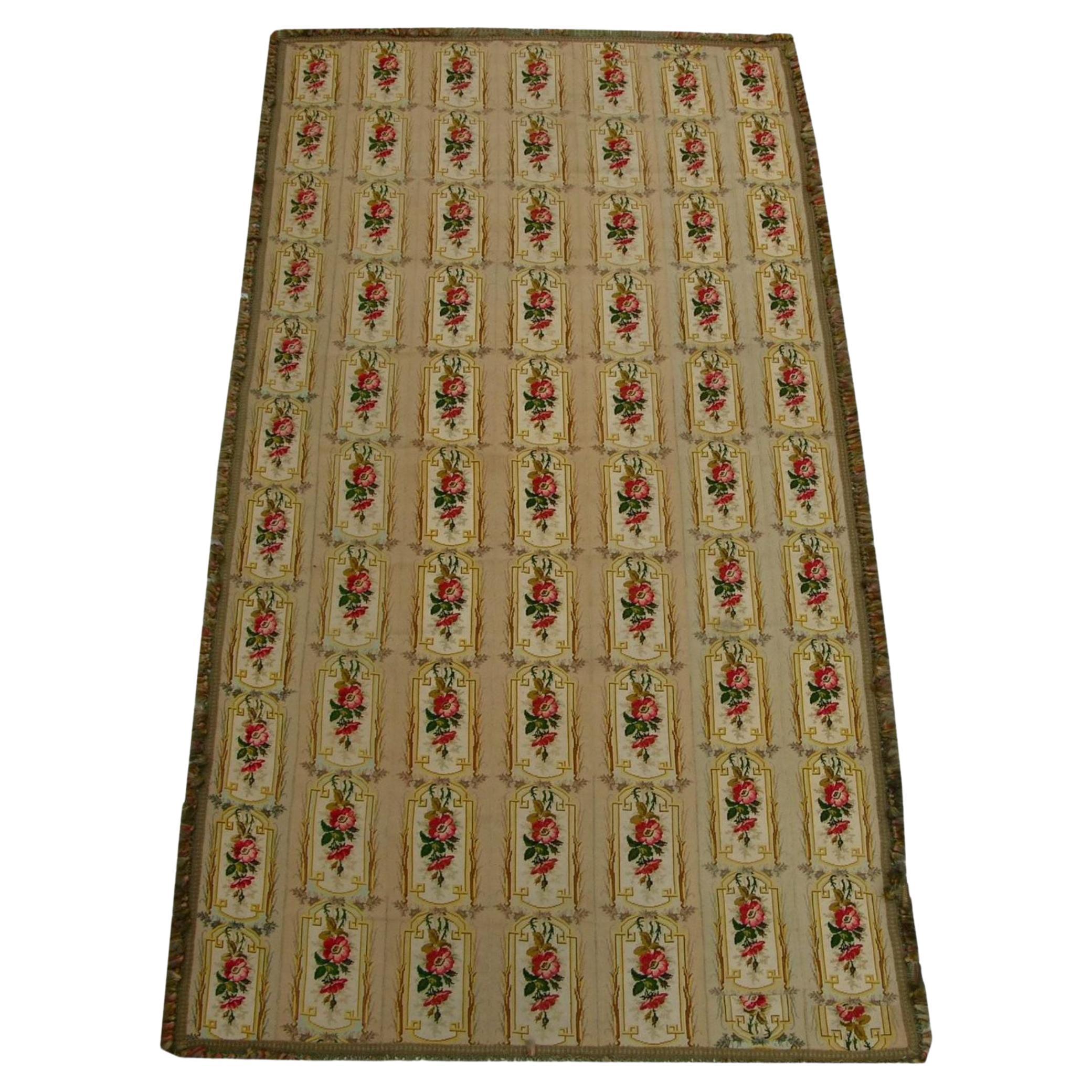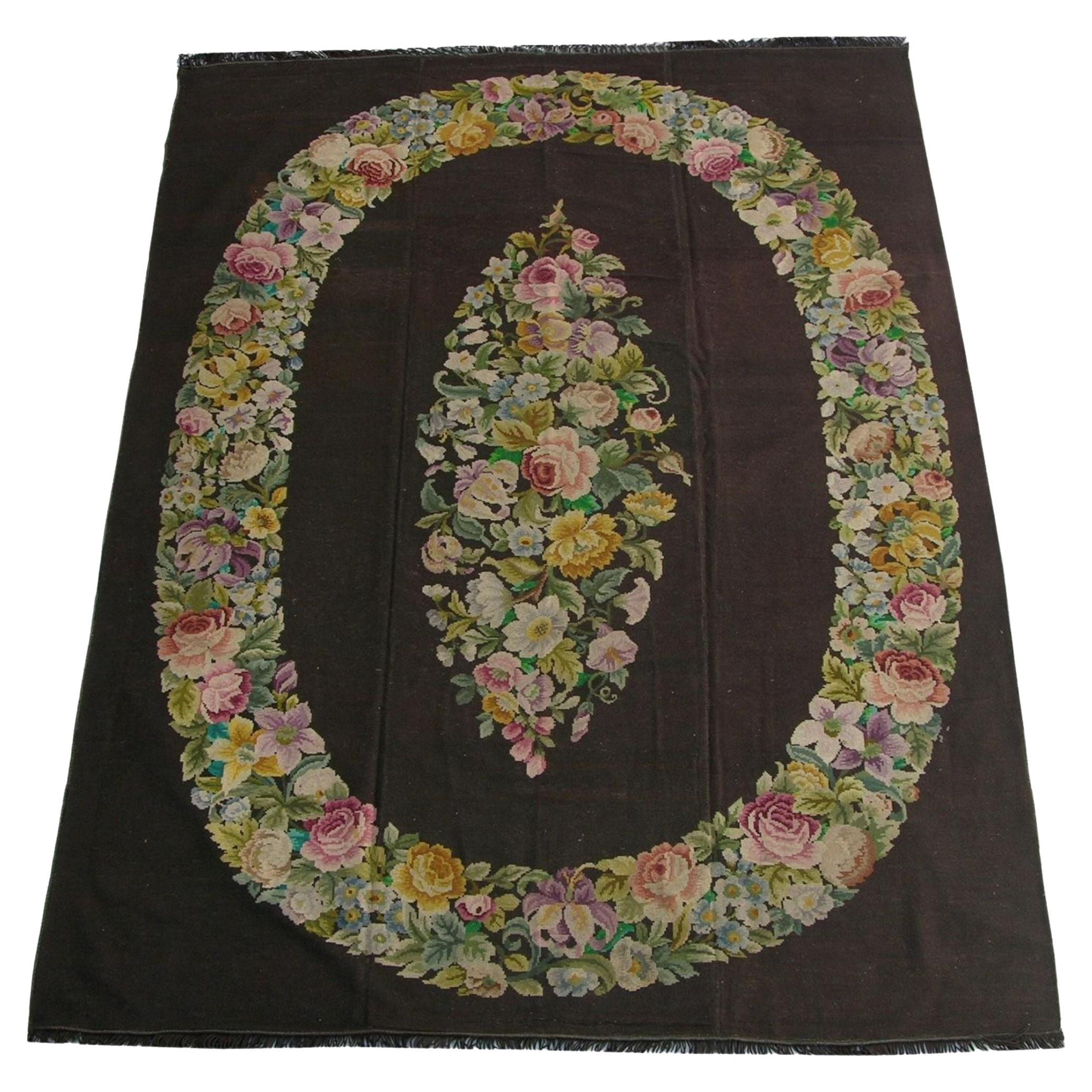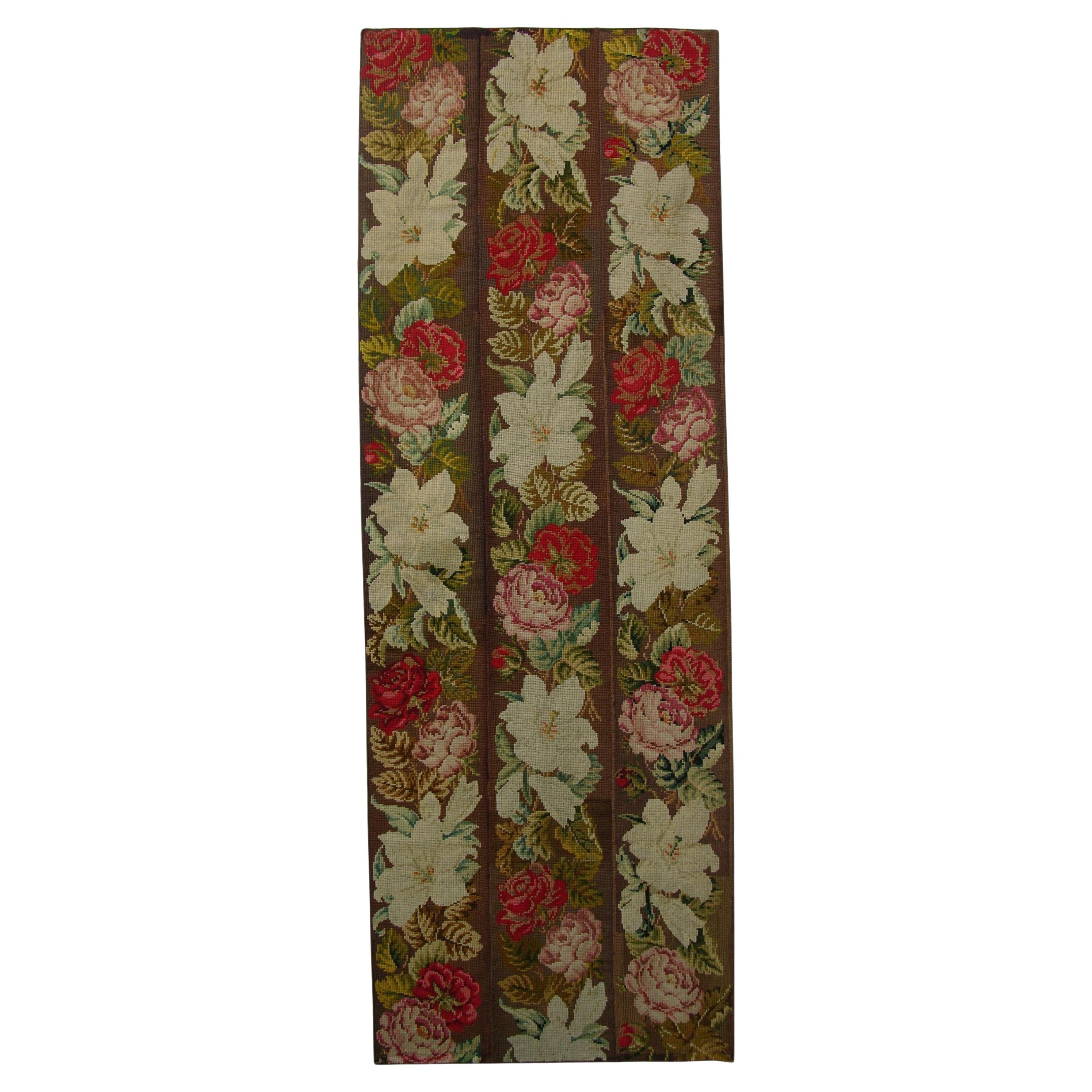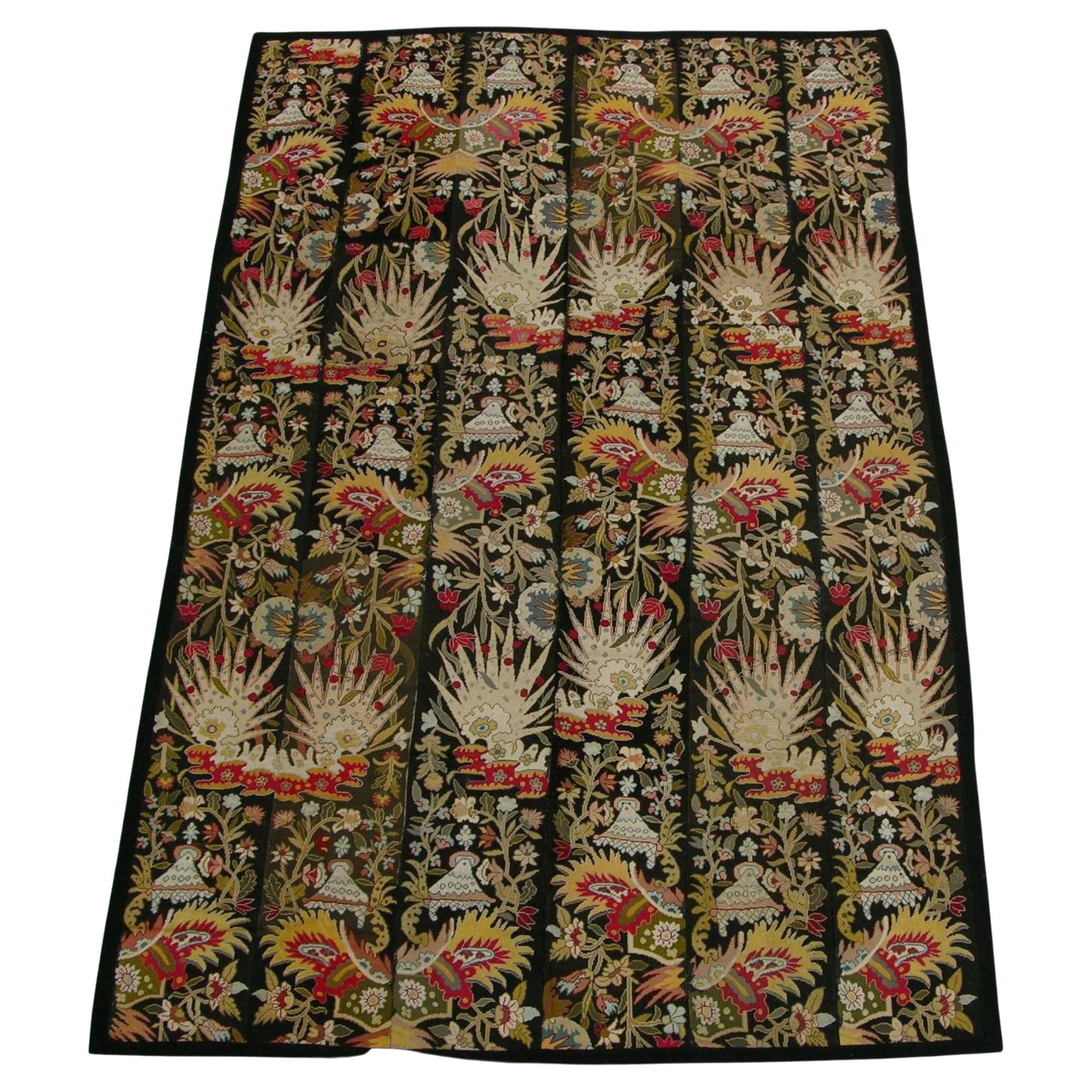Want more images or videos?
Request additional images or videos from the seller
1 of 5
Antique Needlework Floral Rug
About the Item
Needlepoint rugs were created using the traditional needlework weaving technique that is used to make everyday items from furniture to carpets and artwork. However, it has a fascinating history both as a hobby and as an industry. When many people think of carpets, they think of pile carpets or flat weave kilims, but needlepoint has also been used to create beautiful carpets. These carpets are durable and an important part of carpet history.
- Dimensions:Width: 35 in (88.9 cm)Length: 57 in (144.78 cm)
- Style:Other (In the Style Of)
- Materials and Techniques:
- Place of Origin:
- Period:1900-1909
- Date of Manufacture:1900
- Condition:good condition.
- Seller Location:Los Angeles, US
- Reference Number:
About the Seller
5.0
Gold Seller
These expertly vetted sellers are highly rated and consistently exceed customer expectations.
Established in 1920
1stDibs seller since 2023
26 sales on 1stDibs
Typical response time: <1 hour
- ShippingRetrieving quote...Ships From: Los Angeles, US
- Return PolicyA return for this item may be initiated within 3 days of delivery.
More From This SellerView All
- 1920 Antique Floral Needlework RugLocated in Los Angeles, USNeedlepoint rugs were created using the traditional needlework weaving technique that is used to make everyday items from furniture to carpets and artwork. However, it has a fascinat...Category
Vintage 1920s Other Russian and Scandinavian Rugs
MaterialsWool, Cotton
- 19th Century Antique Needlework Floral RugLocated in Los Angeles, USNeedlepoint rugs were created using the traditional needlework weaving technique that is used to make everyday items from furniture to carpets and artwork. However, it has a fascinat...Category
Antique Early 1900s Other Russian and Scandinavian Rugs
MaterialsWool, Cotton
- Antique Needlework Floral DesignLocated in Los Angeles, USNeedlepoint rugs were created using the traditional needlework weaving technique that is used to make everyday items from furniture to carpets and artwork. However, it has a fascinat...Category
Antique Early 1900s Other Russian and Scandinavian Rugs
MaterialsWool, Cotton
- Antique Needlework Floral DesignLocated in Los Angeles, USNeedlepoint rugs were created using the traditional needlework weaving technique that is used to make everyday items from furniture to carpets and artwork. However, it has a fascinat...Category
Antique Early 1900s Other Russian and Scandinavian Rugs
MaterialsWool, Cotton
- 1900s Antique Needlework Floral DesignLocated in Los Angeles, USNeedlepoint rugs were created using the traditional needlework weaving technique that is used to make everyday items from furniture to carpets and artwork. However, it has a fascinat...Category
Antique Early 1900s Other Russian and Scandinavian Rugs
MaterialsWool, Cotton
- 1920s Antique Floral Design Part Silk Needlework RugLocated in Los Angeles, USNeedlepoint rugs were created using the traditional needlework weaving technique that is used to make everyday items from furniture to carpets and artwork. However, it has a fascinating history both as a hobby and as an industry. When many people think of carpets, they think of pile carpets or flat weave kilims, but needlepoint has also been used to create beautiful carpets. These carpets are durable and an important part of carpet history. Archaeologists and scholars consider the roots of needlepoint to have been around 1500 BC. They consider the first needlepoint to include the fine diagonal stitches that were used to sew tents together by the ancient Egyptians. The art eventually evolved into tapestry weaving. However, a tapestry weaving differs significantly from needlepoint in that it uses a loom and vertical warp. Tapestry weaving is closer to the weaving of kilims and pile rugs than canvas work. However, some still include tapestry weaving in the category of needlepoint because of the fine work that appeared during the late Renaissance. It can have a similar appearance to the untrained eye. Technically, tapestry weaving and needlepoint are not the same, and they do not use the same technique. The first actual needlepoint rugs and needle-points began to appear in the late Renaissance. Needlepoint is worked by creating stitches on a stiff canvas. The canvas is typically made from jute or linen and is quite durable. Pieces from the Renaissance were used to cover footstools, chairs, pillows, bed headboards, and other furnishings. They were also used as table coverings and wall coverings. You could also find them on many small items such as purses, shoes, and various adornments for clothing. During the Renaissance, the craft reached a high level of skill, and the designs became incredibly detailed and realistic. They mimicked many of the subjects and styles of famous paintings of the time. They created florals, still life designs, scenes, and geometric tiled pieces. Some of them mimicked the designs found in Persian Carpets. Needlepoint reached its peak popularity in the 19th century when it was considered a proper occupation for a lady. Needlepoint and embroidery held a similar place in societal status at the time. During this time, the work became finer, with some of the canvas reaching a high level of detail. The level of detail is determined by counting the number of mesh in an inch. During this time petit point by French needlewomen could have a mesh count as high as 45 mesh. This allowed women to create highly intricate designs with incredible levels of detail. It is possible to find many antique pieces of needlepoint besides rugs. Needlepoint rugs were popular in France and Spain, where the technique was adapted to create highly intricate designs that mimicked the designs in architecture and fashion. They were popular because they were durable, and it could be fashioned into a variety of items. The canvases themselves were durable, and the wool that they used was also strong, which means that many of the pieces were able to withstand daily use. We have many artifacts that have survived from this time period. Needlepoint rugs are important collectibles because they are different from the pile rugs and kilims that are typically found on the market. Needlepoint carpets are special because they take many hours to create, especially larger works. Needlepoint pieces of any type became popular throughout Europe during the 19th century. It is still a popular hobby today, but perhaps one of the most interesting stories is that of the Portuguese needlewomen of Arraiolos. The story of these women and their beautiful carpets begins in 1492. Needlepoint was a popular occupation in Spain, which had a large population of Moors and Jews. They were an integral part of Spanish culture. However, in 1492, Queen Isabella of Spain issued a proclamation that gave these ethnic groups the order to pack their bags and board ships headed...Category
Vintage 1920s Renaissance Revival Russian and Scandinavian Rugs
MaterialsWool, Silk
You May Also Like
- Hand Knotted Antique Rug Red Blue Floral Pattern Wool Russian Rug by Rug & KilimLocated in Long Island City, NYOriginating from Russia circa 1890-1900, this antique piece connotes a Karabagh rug with a colorful approach to florals in deep, saturated hues arranged geometrically for clean arrangement. A favorite of our principal Josh Nazmiyal, the weave and design indicates Armenian characteristics lending to its collectability in equal measure to its unique use of color. This traditional style features a black background on which sit roses in pink, yellow, blue, red, and green with leaves of a bright red. Three borders appear on this antique Russian rug...Category
Antique 1890s Russian Other Russian and Scandinavian Rugs
MaterialsWool
- Floral Medallion Antique Sarouk Persian Rug Circa 1920Located in New York, NYFloral Medallion Antique Sarouk Persian Rug Circa 1920Category
Early 20th Century Russian and Scandinavian Rugs
MaterialsWool
- Antique Hand-woven Wool Floral Bessarabian Rug from RomaniaLocated in West Hollywood, CAThis traditional handwoven Romanian Bessarabian rug has a charcoal-black field with diagonal rows of polychrome floral sprays, in a whimsical sandy-ivory border of angular meandering...Category
Antique Late 19th Century Romanian Bessarabian Russian and Scandinavian ...
MaterialsWool
- Antique Karabagh Rug in Beige Brown Geometric-Floral Pattern by Rug & KilimLocated in Long Island City, NYOriginating from Russia in 1910, this antique Karabagh runner hosts an uncommonly fine single border, emphasizing a spacious, complementary geometric-floral series. Hand knotted in h...Category
Vintage 1910s European Russian and Scandinavian Rugs
MaterialsWool
- Antique Caucasian Area RugLocated in New York, NYCaucasian rugs are primarily produced as village productions rather than city pieces. Made from materials particular to individual tribal provinces, the rugs of the Caucasus normally...Category
Antique Early 1900s Russian Other Caucasian Rugs
MaterialsWool
- Antique Persian Rug in All over Orange OffWhite, Floral Pattern by Rug & KilimLocated in Long Island City, NYHand Knotted in wool, a very beautiful antique Tabriz garden rug design originating circa 1920-1930, now joining Rug & Kilim’s Antique & Vintage coll...Category
Vintage 1920s Persian Tabriz Russian and Scandinavian Rugs
MaterialsWool





